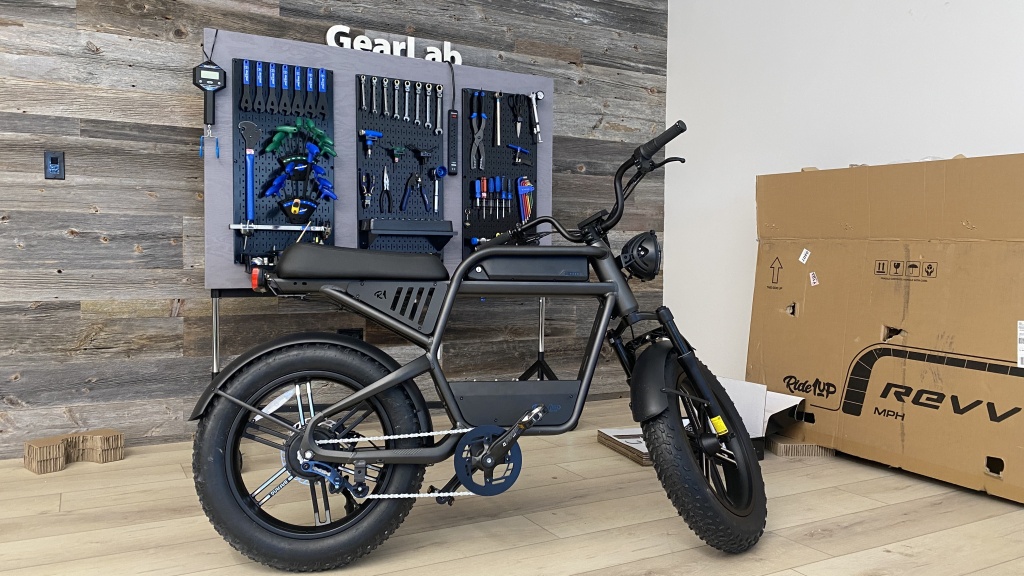After purchasing each model in our line-up, we put our testers to work. Every bike is ridden 100+ miles while running through our testing procedures. We systematically evaluate these Class 3 e-bikes across five separate metrics. This article explains our testing methods and what we look for in each bike we test.
Ride
This metric gauges the level of enjoyment one can derive from riding each bike model. Several factors contribute to this, including the bike's comfort, features, design, geometry, rider position, and component quality. We test each model to see how it performs at high speeds, turning, and on different surfaces. We pay close attention to how smoothly the brakes and shifting operate, as well as how the wheels and tires affect the ride quality. We set up obstacle courses and ride through them at varying speeds, comparing the bikes side by side. We also evaluate their stability when speeding downhill and their comfort level when heading back up.
To ensure maximum comfort, we have riders of various sizes test each bike by pedaling it and observing the handlebar width, grips, saddle comfort, and body position. Our testers also evaluate the range of adjustments available on each model to determine their adaptability to different body types. Additionally, we assess features such as lights for better visibility, fenders to prevent getting wet and muddy, and cargo racks. All of these factors combine to create a satisfying riding experience, which is the ultimate goal of our evaluation process.
Range
To determine the range capabilities of the bikes, we conduct a standardized range test on the same course with one rider for all of the bikes. We use the same rider to ensure consistency in weight across all the bikes tested. To begin, we fully charge each bike and ride until the battery completely dies. We use the Strava mobile app to record the distance traveled, elevation gain, average speed, and elapsed time during the range test. We also validate our data using a Garmin 805 GPS unit and Apple Fitness tracking. Additionally, we conduct the test using only the throttle to remove variations in rider input. This test provides the lowest possible range performance as it does not consider any power generated by pedaling, ensuring fairness in comparison.
Power
We evaluate the bikes' performance using various metrics to ensure accurate measurements. These include top speed, acceleration, and overall power output. We assess both the throttle and pedal assist modes.
For the acceleration test, we solely rely on the throttle. We measure the time it takes for the bike to reach its maximum speed from a complete stop on a flat, open road without pedal assistance. We conduct this test multiple times to ensure consistent results and record the average time.
During the uphill power test, we ride the bike up the same hill near the GearLab headquarters, starting with a full charge and cold motor. We use only the throttle to evaluate how well the bike performs on the hill and how much it slows down on the steepest segments. This test also gives us an idea of each model's torque and relative power.
When we evaluate pedal assistance, we analyze the number and effectiveness of the different modes available. We also observe how smoothly the transition is between each mode. Additionally, we note the amount of pedaling required before the power is activated and how long it stays active after we stop pedaling. We measure the maximum speed achievable with pedal assistance and the rider's effort to reach that speed.
Interface
The Interface metric can differ among companies based on how they design their bikes' controls, display, and battery. To measure this metric, we evaluate the display's readability under different lighting conditions and check how easily the displayed data can be customized. We also assess the bike's controls for their ease of use and ergonomic design. Additionally, we evaluate the battery's charging and removal process for security purposes.
Assembly
To assess the Assembly metric, we time ourselves unboxing and setting up each model. We carefully examine the quality of packaging to ensure it protects the bike during shipping. We also take inventory of all the included parts, accessories, hardware, and tools needed for assembly while following the instruction manual closely. Our evaluation includes assessing how assembled the bike is from the factory, how easy it is to complete the assembly, and identifying any necessary adjustments to the bike's derailleur, brakes, wheels, handlebars, and seat before it is ready to ride.






